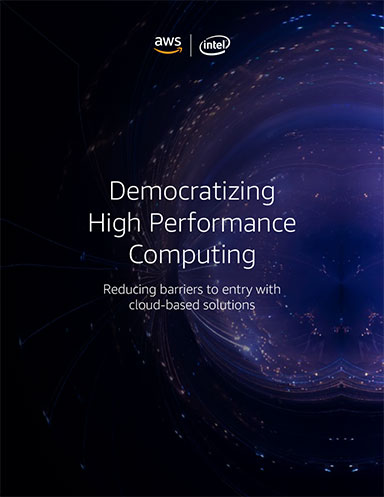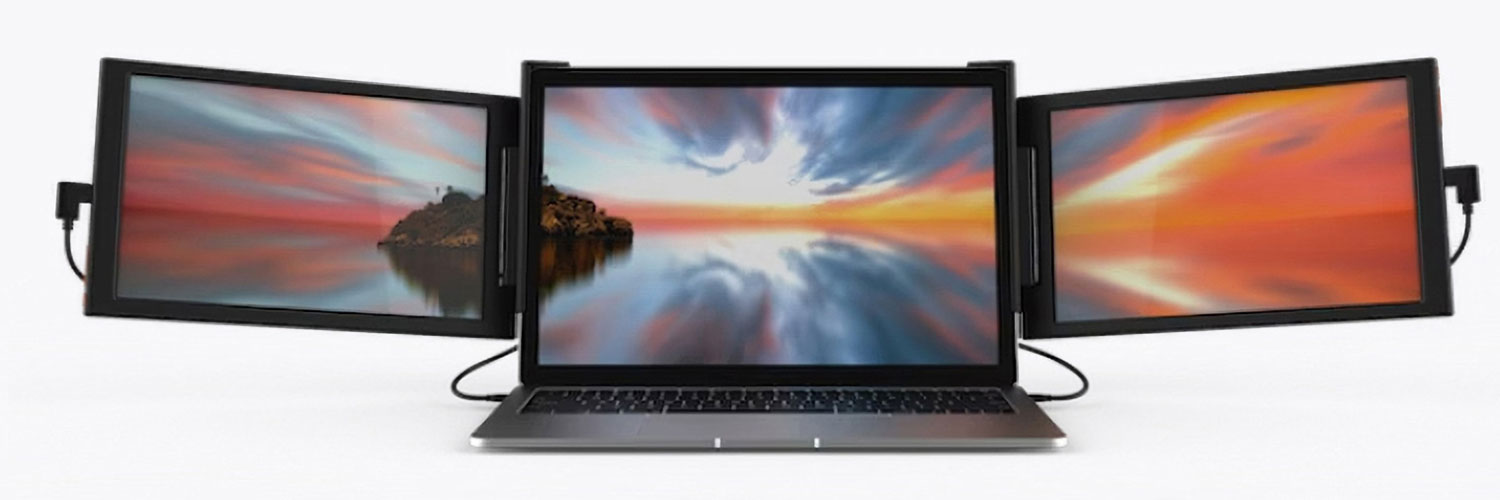
Start-up Xebec offers a set of full high-definition monitors that clip to virtually any laptop monitor. Image courtesy of Xebec.
Monitor Modifications
Blacker blacks and fewer blues highlight workstation monitor trends.
November 7, 2023
When discussing workstation technology, it is easy to focus on CPUs and GPUs. Yet, it is the monitor that mediates between silicon and neuron. Engineers need cutting-edge workstation monitors that can keep up with demanding computational applications. Several trends in the workstation monitor market reveal advancements of vendors and needs of users.
As a reminder, not all monitors are alike. Just as there are substantial and consequential differences between graphics processing units (GPUs) for engineering and for gaming, there are notable differences between monitors for these two markets. Engineering monitors prioritize resolution, color accuracy, extensive connectivity and video conferencing capabilities, whereas gaming monitors focus on fast refresh rates, quick response times and immersive graphics.
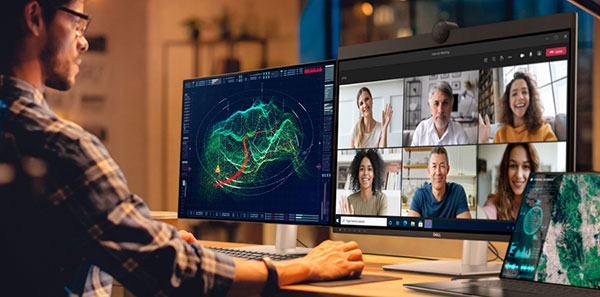
Image Quality and Eye Health
Engineers want sharp, realistic images; vendors have responded over the years by increasing resolution standards and monitor size. More recently, research has revealed that blue light emissions from monitors can impact eye health.
Blue light emissions from monitors have been linked to several negative effects on sleep and eye health, including disrupted circadian rhythms, eye strain and potential long-term damage to the retina. This blue light can suppress the production of melatonin, the hormone that regulates sleep, leading to difficulties falling and staying asleep. Research from TÜV Rheinland says blue light has greater potential than other wavelengths of visible light to cause harm to eye tissues.
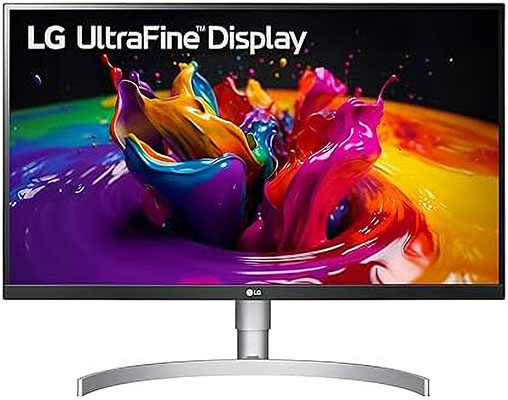
Casual computer users can minimize the potential negative effects of blue light by using blue light filtering glasses or special software, and by avoiding screens for at least an hour before bedtime. But technical professionals who must use a monitor many hours a day need more than a change of habits or a new pair of glasses.
Most screen manufacturers are in the process of adopting a new rating system—Eyesafe Certification 2.0—designed to establish standards for measuring blue light and color performance of screens. Panel manufacturers including Lenovo, Dell, HP, BOE and LG Display are all in the process of making these display certification standards part of product spec disclosure.
Among workstation vendors, Lenovo is the first to release monitors carrying the new Eyesafe Certified 2.0 status.
“The company is very passionate about creating products for customers that provide high value and also address safety concerns,” says Stefan Engel, vice president and general manager of Lenovo’s visual business. Lenovo also offers “Eye Care Mode” in its Vantage software, which ships with all new monitors.
BenQ offers Low Blue Light Plus, a special chip that allows the display to avoid short wavelength blue light emission (420 nm ~ 455 nm) while retaining the long wavelength blue light (455 nm ~ 480 nm). The company says this allows users to experience an optimal color reproduction experience without the negative consequences of short wavelength blue light.
Enhanced Connectivity Options
The USB-C connection standard has become the norm for smartphones; now it is also a connectivity standard for monitors. Many vendors use USB-C to support Thunderbolt power delivery of up to 140W. One example is found in the Dell UltraSharp line, which uses USB-C to provide image signal and connectivity.
USB-C technology allows for one single cable to provide audio, visual, data transfer and electric power.
“Our vision is that the monitor is the hub,” says Vinay Jayakumar, a Dell product consultant for commercial displays. A mouse, keyboard and a solid-state drive (SSD) could be hooked to the monitor and not the computer. “It makes for a clutter-free environment,” he says.
It is also common for monitors to support 2.5 Gbps RJ45 for stable wired Ethernet access; super-speed USB for fast data transfers and DisplayPort 2.1 for image transmission without compression.
Improved monitor connectivity also improves video conferencing. Workstation monitors now feature built-in high-definition webcams, auto framing and echo cancellation for enhanced video conferencing experiences. Such simplicity is especially helpful in the work-from-home experience.
“Investing in USB-C enables simplified setup and easy transition between mobile and workstation computer,” Jayakumar says. Using USB-C has the added benefit of charging the notebook computer when the monitor becomes the new docking station.
Multiple Monitors
Years ago, industry analyst Jon Peddie quipped, “see more, do more.” Research since then continues to validate this intuitive statement. Multiple monitors offer enhanced productivity by providing more screen real estate. Multitasking is easier and comprehension improves when more data is visible. Modern monitors make setting up multiple displays easy, with options for daisy chaining and single-cable connectivity.
The latest trend is to bring multiple monitors to the laptop experience. A group of video engineers took a project to Kickstarter and is now selling the Xebec TriScreen 2, a pair of 10-in. in-plane switching (IPS) monitors that clip to virtually every laptop screen on the market without magnets or adhesives. The two new monitors weigh less than 2 lbs., making it reasonable to take them on the road. The Xebec and its imitators are limited to 1920 x 1200 (Full high-definition) resolution, which makes them best suited for text-based data display or images where the highest resolution is not critical.
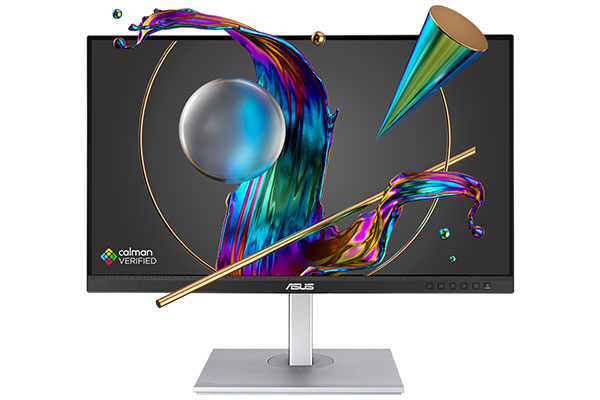
Black is Blacker Than Ever
A new type of IPS monitor technology came to market in 2022. IPS Black produces 35% deeper blacks than standard IPS monitors. The Dell UltraSharp 32 (U3224KB) is one of several new 6K IPS Black monitors on the market using LG Display hardware. Commissioned research by Dell says color accuracy increases 1.2 times compared to conventional IPS. The contrast ratio is an incredible 2000:1, which compares to contrast ratios of 700:1 to 1200:1 for most IPS monitors.
More Dell Coverage
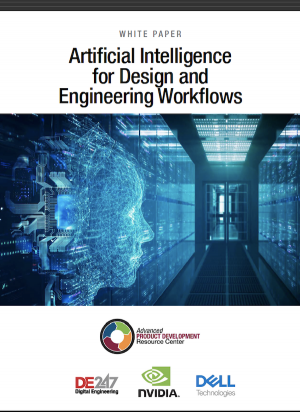
More Lenovo Coverage

Subscribe to our FREE magazine, FREE email newsletters or both!
About the Author
Randall S. Newton is principal analyst at Consilia Vektor, covering engineering technology. He has been part of the computer graphics industry in a variety of roles since 1985.
Follow DE





